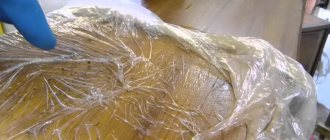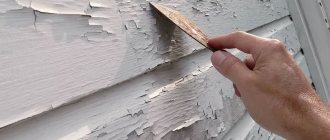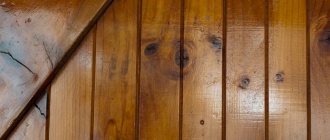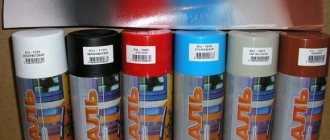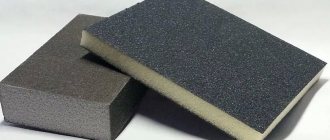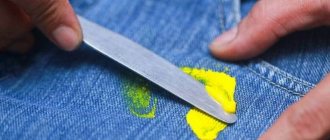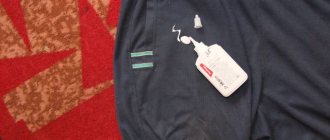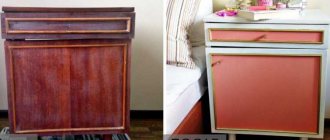The process of restoring furniture is a rather difficult task, for which several methods can be used. The restoration procedure consists of several stages. One of the most important steps is to remove the old varnish coating. Therefore, you need to figure out how to properly remove varnish from furniture without damaging the wooden surface.
Chemical method
Many people are afraid of the mechanical cleaning method only because this can ruin the surface and damage the wood. In this case, it is recommended to pay attention to the chemical method, which is also effective, so that you can easily do everything yourself. This method is perfect if you need to remove old coating from an uneven, grooved or carved surface.
Today there are many special products called washes. It can be liquid, powder or gel. The liquid is perfect if the product has a maximum of three layers of varnish. Gels are suitable for multi-layer coatings. And nail polish remover in powder form is ideal for large surfaces.
If you choose powder as a nail polish remover, it is recommended to dilute it a little with water before use. It will be easier to apply a thick paste evenly onto the surface, and this way the product will cope with its task more effectively.
The general algorithm for working with chemicals includes the following steps:
- Before you start work, put on gloves and a respirator to reliably protect yourself. Remember that you are not dealing with harsh chemicals. Otherwise, the preparation process is similar to that recommended when using the mechanical method.
- Using a regular paint brush, apply the washing liquid evenly to the prepared surface in an even layer. It only needs to be applied in one layer, and then the product should be covered with film. After a couple of hours you can open it. If there are more than three or four layers of varnish, then the product must be left under the film for four hours or more.
- After the film is removed, you need to carefully remove the layers of varnish using a regular spatula. Try not to work with pressure and do not use a spatula that is too sharp, otherwise the wood surface will be seriously damaged.
- Next, you can wash off the remaining varnish with plain water. In order to clean the surface, you can add a little table vinegar to the water. Use only one tablespoon of vinegar essence per liter of water. After this, the product will be ready for you to cover it with a new layer of special varnish.
- If the method described above did not help to completely get rid of all layers of the old coating, it is worth repeating the procedure. If only small areas of old varnish remain on the surface of the furniture, they can be easily removed with sandpaper.
If using a powder or aerosol, follow the same instructions.
How to avoid mistakes
Wood is a durable material, but it is easy to damage.
- It is afraid of moisture, swells and cracks. Therefore, any manipulations with liquids must be carried out quickly, and not allow it to stagnate and seep inside.
- Do not leave furniture to dry in the open sun. This can cause the wood to become dull, weathered, and even crack. Choose cool shade where you have access to fresh air.
- It is better to remove decorative varnish from furniture made of natural wood. If you're upgrading your chipboard utensils, be prepared for the surface to crack and crumble.
- Do not try to remove hairspray using a household hair dryer. It does not have the power to melt the varnish texture.
The work of removing old varnish from old furniture should be done evenly, without repetition.
It is often not difficult to remove varnish from furniture. If you lack confidence in technology and your own abilities, it is better to turn to specialists.
Chemicals
The use of chemicals (removers) is a very popular method of removing varnish from furniture, doors and other wood products. It is especially suitable if the surface is delicate. You can use ordinary solvents, special liquids, gels, and powders.
The choice of the appropriate option depends on the specific situation. Denatured alcohol is suitable if you need to remove shellac.
If there are relatively few layers of varnish on the surface (up to 3), liquids can be used. Such products are not absorbed very deeply, because they erode quite quickly.
A great option for large-scale work is powders. Powdered products are easy to transport and can be stored for a long time. They should be diluted with water before use. This produces a thick paste-like mass that is convenient to apply to the surface. Various ready-made pastes and gels are also suitable for situations where significant amounts of paint material need to be removed.
You can also use spray cans to remove varnish from wood. A foam layer appears on the treated base. Such tools are convenient to use, but they are only suitable in cases where the amount of work is insignificant.
How to remove varnish from furniture at home?
The process of restoring furniture is a rather difficult task, for which several methods can be used.
The restoration procedure consists of several stages. One of the most important steps is to remove the old varnish coating.
Therefore, you need to figure out how to properly remove varnish from furniture without damaging the wooden surface.
Choosing a tool for removing varnish
Before you start removing paint and varnish from the wooden surface of furniture, you should stock up on the necessary tools, which will vary depending on the method you choose.
We recommend: How to remove oil paint from walls - the best and worst ways!
The entire list of tools required for the procedure:
- sandpaper for sanding;
- sandpaper;
- latex gloves;
- glasses;
- special chemical composition for washing;
- respirator and mask for protection;
- brush;
- soft sponge;
- hard metal brush;
- blowtorch;
- hair dryer used in construction;
- polyethylene film.
Selecting a removal technique
Whatever method you choose to remove paintwork, you need to remove it carefully and thoroughly.
The main thing is not to damage the wooden covering itself, otherwise you will ruin the entire restoration process. After this, you should decide which method you will use to remove the varnish from the wood surface.
The main methods that are used today:
- chemical;
- mechanical;
- thermal;
- water.
Chemical method
The chemical method will allow you to effectively remove varnish from old furniture at home. To carry it out, you must wear a cotton suit, protective rubber gloves, a mask and goggles. This is necessary to protect against chemicals that contain acid. Therefore, if they come into contact with the skin, these chemicals can cause burns.
A complex of chemicals used to remove varnish from old furniture is called a remover. It is a special powder or mixture that, due to its chemical properties, can easily corrode up to ten layers of paintwork. This product can be purchased in specialized stores.
Stages of chemical nail polish remover
- Preparatory stage. At the preparatory stage, it is necessary to dilute the dry powder with the amount of water indicated in the instructions. All components of the solution should be mixed in order to obtain a paste of a homogeneous thick consistency. It is important to remember that such a paste in the form of a gel can stick even on a vertical surface.
- Wash.
This stage, which consists of applying a paste-like remover to the furniture, is one of the key ones. The mixture is best applied with a regular brush, treating the surface in a thick layer. Movements with the brush must be carried out in one direction so as not to repeatedly apply the mixture to the same area. - Applying a special film.
This stage is needed in order to enhance the washing effect. To carry it out, take a polyethylene film and cover the surface with the applied remover with it. This film should remain on the surface for at least an hour. It is best to leave it for 3 or 4 hours. The time it takes to apply the film depends on the thickness of the paint coating and the quality of the varnish itself.Upon completion of this stage, the film is removed. It must be remembered that removing the film is possible only when the color of the remover darkens and becomes dark brown. In this case, the paintwork should swell.
- Varnish removal stage. If you did everything correctly in the previous stages, then you can easily remove varnish from old furniture even at home.
To do this, you need to take a spatula and use it to carefully remove loose particles of paintwork. Next, you need to take sandpaper and walk it several times on a varnished wooden surface. This way you can remove any remaining varnish that was not removed with a spatula. In this case, it is advisable to use a spatula that has non-sharp edges.Therefore, if you are dealing with a new tool, then you need to sharpen it a little using a whetstone. Otherwise, a spatula that is too sharp may damage the wood furniture you are cleaning. Therefore, a plastic tool, which is considered less rigid, may be an excellent option.
- Washing elimination stage.
To remove residual remover from a varnished coating, take at least 0.5 liters of ordinary water and dissolve 100-150 ml of vinegar in it. Dip a sponge into the resulting solution and thoroughly rinse the surface with it. Then wipe the surface with a flannel cloth.Thoroughly cleaned furniture should be left to dry outdoors, out of direct sunlight. This step must be carried out quickly so that the wooden surface is not exposed to excessive moisture.
Mechanical methods
There are several options for removing varnish from old furniture mechanically. Therefore, it is better to study each of these options and choose the appropriate option for yourself.
First option
This method is best chosen if the paintwork material peels off in fragments. To perform this technique, use coarse sandpaper or a steel brush. With these tools you need to clean the surface using circular movements. Next, you need to take a screwdriver or spatula, with which you can remove the varnish even in hard-to-reach areas.
Second option
This technique is more effective and is used if the varnish coating has not yet begun to peel off. Here you will need an eccentric sander and hard sandpaper.
Before carrying out work, wear safety glasses and a mask. Next, using a machine filled with sandpaper with a grit of 80 to 120, you should carefully treat the surface as a whole. After this, the machine changes the previous version of sandpaper to 180-grit material.
This tool should also be used to go over varnished wood. At the final stage, you should make sure that no fragments of varnish remain on the furniture.
In general, mechanical methods are recommended if you plan to apply enamel or other paint coating to wooden furniture after removing the varnish. This is due to the fact that mechanical processing can damage the wood.
Thermal method
If you plan to remove the varnish using the thermal method, then for this you will need a hair dryer or a blowtorch. The main advantages of the thermal method of removing varnish are the speed of work and high quality of cleaning. However, to get good results, you will need to follow all the rules for performing this technique.
We recommend: Types, features and scope of application of silicate paints
At the first stage, it is necessary to heat a certain fragment of the wooden surface from which you plan to remove the varnish. This should be done using a hair dryer or blowtorch. After this, using a spatula or a sharp knife, carefully remove the melted layer of paintwork.
It is advisable to work as quickly as possible so that the varnish does not have time to harden again. After removing the coating from one area, they move on to removing the varnish from the next fragment. This is how the varnish coating is gradually removed from the entire surface of the furniture.
The thermal technique requires special care. To do this, you must strictly observe a certain firing distance and not violate the temperature regime. This will prevent the wood from turning black.
If you do not follow all the rules, the wooden covering may become unusable. Therefore, if smoke or bubbles appear, you should immediately stop and remove the tool from the wooden surface.
Water method
The water method of removing nail polish is the safest and easiest. The main tool here is a sponge, which needs to be well moistened with water. Next, use a sponge to wipe the surface that you plan to clean from varnish. Liquid that gets on the paintwork will gradually dissolve it.
The heavily moistened surface must be walked over with coarse sandpaper many times. These steps must be repeated until the paint material becomes a paste. After complete removal of the varnish, the wooden furniture is thoroughly washed and dried. At the final stage, the surface is treated with fine-grained sanding paper.
Thus, removing paint and varnish from old wooden furniture can be done using several methods. Moreover, in each specific situation you need to choose the most optimal method of removing varnish.
Folk remedies
Craftsmen know how to remove polish from furniture at home. Sometimes you don’t have the opportunity to go to a hardware store and choose the right product. Then ingenuity and whatever is at hand come to the rescue.
Regardless of the method chosen, it is important that the work is completed quickly but carefully.
These methods include heating the old varnish using a hair dryer or soldering iron. Some craftsmen adapt to doing this with an iron through fabric material. Wetting the furniture with water also helps get rid of the old coating.
Using a construction knife or spatula, you need to clean the base from the paint coating that has been melted.
Acetone will help you remove polish at home. This is an excellent solvent that works on par with professional products. Wet a cloth or sponge with acetone and apply to the polished surface. To enhance the result, you can cover the furniture with plastic film.
Watch the varnish. It can be removed in 15-30 minutes.
Remove varnish from furniture by sanding
Using sanding, you can not only remove varnish, but also level the surface of wooden furniture. Sanding is done with sandpaper (abrasive) paper manually or using a sanding machine.
To make hand sanding easier, use a simple wooden block and wrap a piece of sandpaper around it.
To remove varnish from furniture , start sanding the surface with medium-grain paper, gradually moving to fine-grain paper.
A special sanding machine of small size and power will greatly simplify the removal of varnish. For such a machine, only fabric-based sandpaper is suitable.
After each sanding step, remove dust from the surface of the object with a slightly damp cotton cloth.
Before removing varnish from furniture , buy a special device with a grip for sandpaper at a hardware store. This will allow you to distribute the sanding pressure evenly.
To sand rounded and convex surfaces, move the sandpaper strip up and down at right angles.
How and how to remove paint from a wooden surface
It is very difficult to completely remove old paint from the surface of furniture, but we will try. For this, special chemical solvents are most often used, which can be purchased at construction or specialized stores, as well as construction hair dryers.
Gently wash the surface of the product with a dishwashing sponge. Instead of a sponge, you can use foam rubber or cotton cloth. Remove soap solution and dirt from the surface of the furniture by wiping it with a soft cotton cloth, first slightly damp, then dry.
First, let's look at how to remove paint from furniture using a solvent and a metal spatula:
- Apply solvent with a synthetic flute brush. Sometimes it is necessary to apply several layers of solvent to remove a thick layer of paint. Follow the time recommended by the manufacturer.
- When the paint softens and begins to peel off the surface of the wood, scrape it off with a metal putty knife.
- Depending on the composition of the old paint and the number of layers, it may be necessary to reapply the solvent to achieve greater softening and swelling of the paint.
Mechanical method
This method of removing varnish is used quite often; it involves peeling off the varnish layer from the surface. The most convenient way to do this work is with a cycle, which is a special tool that has a sharpened steel plate and a handle. This device is sold in stores, thanks to it you can quickly remove old paint and varnish material.
If you don't have a cycle, you can use a regular piece of glass. However, when working with glass, you need to be very careful not to injure your hands or scratch the surface of the wood. It is necessary to work with gloves and it is worth considering that the glass becomes dull quite quickly. If the base has a thin varnish coating, it can be removed using sandpaper.
How can you remove varnish from a wooden surface if you have a large area to treat? You can use a power tool that allows you to quickly and effortlessly remove the paint material. You can use:
- tape;
- vibration;
- eccentric tool.
Vibrating electrical devices are the cheapest. These machines allow you to remove varnish, for example, from furniture. Sandpaper is installed on the sole of the machine, which will sand the base. When using a vibration device, a lot of dust will appear, so it is necessary to protect all objects and products in the room using ordinary plastic film. It is important to wear a respirator when working with power tools to prevent dust from entering your respiratory tract. Thanks to processing with an electric machine, the base will be smooth and attractive; this method is much more effective than processing with sandpaper.
The advantage of mechanical processing is that there is no need to use hazardous chemicals, which are usually harmful to human health. However, the use of mechanical means has one significant drawback - you will have to spend a lot of time and effort. In order not to carry out mechanical processing of wood at home, you can entrust this work to specialists. Professional equipment makes it possible to remove paint and varnish material very quickly and get the best result.
We hide cracks and restore chips
At the dacha of our forum member AnnaSava there is a beautiful oak sideboard with carved glass from the early 20th century. The wooden top was perfectly preserved, but the corners of the lower doors were chewed by rats. Is it possible to restore the lost surface on your own? Participant FORUMHOUSELali suggests the following solution - mix sawdust with epoxy resin and “build up” the missing corners if the sideboard is intended for painting in the future.
You can also eliminate defects on not very valuable pieces of furniture using modern wood putties. If there are chips of wood or minor damage to the veneer on antique furniture, it is better to restore them using bone or fish glue mixed with sawdust (from sanding). Bone glue is made from animal bones, fish glue - from the swim bladder of sturgeon fish - ready-made compositions today can be easily found in construction or online stores.
Mechanical cleaning – sandpaper or drill?
To remove the top layer, in addition to the chemical effect on the paintwork, a mechanical method is used. It is especially effective when used in cases where the varnish layer is quite thick and it is problematic to remove it with solvents. When cleaning mechanically, you must remember that the sanding tool must move along the wood fibers so as not to disrupt their integrity.
Mechanical method of removing varnish
The easiest way to remove varnish is with coarse sandpaper or a steel brush. They are convenient to use if the paintwork is peeling off in fragments and the working area is small. When finishing work in hard-to-reach places, the varnish can be removed using a spatula. To carry out mechanical cleaning, a special construction tool is also used - a scraper, which consists of a comfortable wooden handle and a sharpened steel plate. Thanks to the angular orientation of the handle, this tool is easy to work with and creates the necessary pressure when applied to the surface.
To make the process faster and with minimal effort, you will need an electric drill with a sticky or rubber-based grinding wheel. You can cut out a piece of sandpaper yourself and press it down with a screw.
Removing varnish residues with a spatula
When working with such a device, quite a lot of chips and dust are generated, so you should open the windows, cover the work surface and nearby things with film, and also put on a respirator and safety glasses. To remove varnish from furniture, we put a grinding wheel with sandpaper with a grain size of 80 to 120 mm on a drill. When the base layer is removed, change the sandpaper to paper with a grain size of 180 mm, neutralizing all remnants of the paintwork.
Choosing a tool for removing varnish
Before you start removing paint and varnish from the wooden surface of furniture, you should stock up on the necessary tools, which will vary depending on the method you choose.
The entire list of tools required for the procedure:
- sandpaper for sanding;
- sandpaper;
- latex gloves;
- glasses;
- special chemical composition for washing;
- respirator and mask for protection;
- brush;
- soft sponge;
- hard metal brush;
- blowtorch;
- hair dryer used in construction;
- polyethylene film.
Is it worth spending money on chemical removers?
Removing varnish from furniture is often done using chemicals. They are a complex of specialized substances called removers; they can be in liquid, powder or gel form. Their task is to destroy the outer layer of paint quickly, efficiently and without much effort. The choice of a suitable remover largely depends on the type of varnish. Thus, it is better to remove oil varnish and paint with white spirit or turpentine, bakelite and alcohol varnish with ethyl alcohol, and for other categories gasoline is also suitable. There are quite a few specialized removers.
Using a special wash
Among them, we can note the Docker S5 Lack wood varnish remover. The advantage of this household chemical is that it is odorless, so it can be used for indoor work. Despite this, when working with chemical solvents, it is necessary to ensure all safety measures are followed - open the windows, wear a cotton suit, rubber gloves, a respirator and safety glasses.
The further process will consist of five main stages. The first is preparing the working solution. If you purchased the remover in liquid or aerosol form, you don’t need to do anything, but the powder will need to be diluted with water in accordance with the manufacturer’s instructions. As a result, you should end up with a thick paste that will stick well even on a vertical surface until you remove it. The second stage is applying the remover. Take a paint brush, pick up the required amount of paste and spread it over the entire surface in a thick layer. The third stage is fixing the polyethylene film. Prepare a regular film and cover the area with the remover with it. This will help enhance the solvent effect. We leave the film until the remover is removed, when it turns dark brown and the paint coating itself swells.
The fourth stage is removing the remover and varnish. After the time specified by the manufacturer, the paintwork should peel off completely, and it can be easily removed with a spatula, after which you need to walk over the surface with sandpaper several times. When working with a spatula, we recommend using a tool with non-sharp edges so as not to damage the wood. When using a new tool, its blade must be lightly processed with a whetstone. An alternative is to use a plastic squeegee.
The final stage is the elimination of the residue of the remover. To complete the process and move on to the next stage of restoration, prepare a cleaning agent by dissolving 100–150 ml of table flavor in half a liter of water. Dip a foam sponge into the resulting mixture and walk it over the entire wooden surface, then remove excess moisture with a dry cloth and leave the furniture to dry. Instead of a vinegar solution, you can also use alcohol; it will remove stuck varnish and remover residues well.
Mechanical method
The mechanical method is popular, thanks to which you can achieve excellent results and ideally prepare the surface for repair. This method has one significant advantage - the absence of any chemicals. But be prepared for the fact that the process can be long and requires special care.
To carry out mechanical removal of the old coating, you will need tools. It is quite possible to use a metal plate as a tool, which should first be sharpened. This must be done so that the tool can better cope with the task.
Sandpaper of various types can also help in this matter. A brush with metal bristles will come in handy at the very beginning of the preparatory work. You can also use a grinder or even an angle grinder, which will need to be equipped with a special attachment.
You can use a router if you have one in your home.
All of the above tools will help you cope with a small layer of varnish. When using tools such as a grinder or grinder, it is recommended to be extremely careful not to damage the structure of the product itself.
Don’t forget about personal safety methods. The work should be done with gloves, a respirator and safety glasses, since during cleaning there will be a lot of fine dust, breathing which is strictly not recommended.
Thermal method
To easily remove paint and varnish material, it can be treated thermally, that is, heated to a high temperature. After heating, the material will adhere much worse to the base, it will become covered with cracks, and can be very easily removed with a regular spatula or chisel. When performing heat treatment, it is important to consider the following important nuances:
- if the material becomes charred rather than cracking and peeling, then this method will not work. You will have to use another method, for example, treatment with chemicals;
- Be sure to use thick gloves to protect your skin from burns. In addition, it is important to work in a respirator; windows and doors in the room must be open. As a result of heating, the varnish composition may begin to emit harmful and dangerous vapors that can harm human health;
- During heating, particles of paint and varnish material may begin to bounce off, so you need to protect your eyes with goggles. In addition, it is important to remember fire safety precautions.
Heat treatment is usually carried out using a heat gun, which heats objects to a high temperature, much hotter than a regular hair dryer. A burner running on gasoline or gas is also suitable for the thermal method. You need to work with this device very carefully and carefully so as not to burn the skin or damage the wooden surface. You need to work with two hands, in one there will be a heating device, and in the other - a spatula, with the help of which you must immediately remove the paint and varnish material before it cools down.
An undeniable advantage of heat treatment is the high speed of removal of paint and varnish material. However, this method requires certain skills, because if the base is overheated, it can catch fire.
Conclusion
We told you about how to remove old varnish from a wooden surface on your own, without resorting to the services of expensive specialists. It’s up to you to decide which of the methods described above is most appropriate; the main thing is to remember that there is always the possibility of damaging the product. Be careful (see also the article “Water-based wood varnish: characteristics, selection and application”).
In the video presented in this article you will find additional information on this topic.
Process Features
There are no universal remedies that are suitable in all cases. The choice of the optimal option depends on a variety of nuances. Here are the most important ones.
- Thickness of the previous varnish layer. If it is thick, you will have to spend a significant amount of time removing it.
- Composition of paint and varnish material.
- Surface type. Much will depend on what exactly you have to remove varnish from: parquet flooring or a piece of furniture.
How and with what to remove varnish for painting wooden doors?
To renew the varnish coating, you must first carry out preparation. To do this, remove the old paint layer using one of the following methods:
- Using sandpaper. For more convenient work, it is recommended to use a block with sandpaper stuffed on it. To completely remove the coating, it is necessary to start processing with coarse-grained paper, gradually approaching zero.
- Using a grinding machine. This option is much faster than the manual method. The tool carefully removes the old coating, leaving the surface clean and smooth.
- Solvent. Chemicals do not completely remove all layers, leaving marks on the wood. But this option is also used during coating removal.
How to remove varnish from wood - step by step diagram
Step 1: Apply wash
Wet the brush in the wash and apply a good layer to the surface. You should try to move the brush in one direction and not run the brush a second time over an area that has already been covered.
Step 2: Film
To enhance the effect of the remover, it is recommended to cover the surface with plastic film - to make a kind of compress. You need to wait from 40 minutes to 4 hours, depending on how many layers need to be removed. A clear sign of the effective effect of the remover is a change in its color to a brown or dark brown shade and swelling of the varnish layers.
Step 3: Remove the varnish
How to remove softened varnish from wood? For this you will need a regular spatula. If it's a new tool, it will likely have sharp, angular edges - it's best to round them off with a whetstone to make it safer to work with wood. Press on the swollen surface carefully. It is quite possible that you will not be able to delete everything in one go; in this case, the process can be repeated a second time. Sometimes it is enough to walk over the surface with sandpaper to remove the remaining varnish film.
Step 4: Neutralize the Remover
After completing the work of cleaning the varnish, be sure to rinse off the remaining liquid with plain water or dilute 100 ml of vinegar with half a liter of water for this purpose. Try to do this step carefully, but at the same time quickly, so that the wood is not exposed to moisture for a long time - after all, it is left without a protective coating. After washing, thoroughly dry the surface with a flannel cloth and place the item to dry in a ventilated place, but not in direct sunlight! Once the wood is completely dry, you can begin to re-varnish the surface.
In addition to liquids and pastes, there are also sprays that are sold in cans. When sprayed, they form a layer of foam that clings to the surface. This solvent is more convenient to apply, but it will only remove thin layers of coating. Acetone can also be used as a solvent. To do this, you need to make a compress from a cloth generously moistened with this liquid and apply it to those places that need cleaning. The top of the compress should also be covered with a film and kept on the surface for at least 10 minutes. In any case, no matter what solvent you use, it is best to carry out such work in a well-ventilated area.
How to varnish interior wooden doors in a house?
Before you paint a wooden door with stain and varnish, you need to select the material. On the market you can find many types of products that differ in their basis:
- alkyds have a yellowish tint. The main component is the solvent. Among the advantages are strength, water resistance and quick drying (less than a day). The disadvantages include an unpleasant odor when painting and fading in the sun;
- nitro varnishes are colorless and retain the natural color of the wood. The main components are acetone and nitrogen compounds. The advantages include low cost, durability and strength. Disadvantages are flammability and toxic substances;
- polyurethane ones darken the color of the wood. The main components are polymers with long molecules. The advantages are low toxicity and absence of unpleasant odor. Among the disadvantages, the need for a brightening primer should be highlighted;
- acrylic ones are made on a water basis. Used to restore things in residential areas. The advantages are resistance to ultraviolet radiation and does not crack during use. The disadvantages are long drying time and low abrasion resistance.
Methods for removing paintwork
It should be immediately mentioned that only the most popular methods of surface cleaning will be covered here, and there is no universal recipe that is used in all situations.
The choice of method will depend on a large number of variables, among which we highlight:
- The type of base is of little importance, because it makes a difference whether it is furniture or parquet that needs to be cleaned.
- Composition of the varnish – different options are relevant for different compositions.
- Layer thickness – it’s one thing to remove 1 layer, and another thing to remove a large number of old layers.
Facilities
There are three main ways to remove varnish.
- Using chemical compounds
- Mechanical impact
- Heating to high temperature
Each of them has its pros and cons. This is not to say that there is a universal solution. For each specific case, a different method of cleaning the surface is selected. The choice depends on the composition of the varnish with which the wooden surface was coated and on the thickness of the layer. The type of wood base is also important, for example, different methods are used to treat wood floors and wood chairs.
Chemical compositions
Another name for removing varnish using chemicals is stripping. This is the most common method for processing small areas of wood. Used for furniture, figurines and other products where the varnish layer is quite thin, and its removal must be delicate.
There are three types of chemicals designed to remove old varnish from wood.
- Liquid. Used if a thin layer of varnish is applied to the product. Liquid is a substance that quickly evaporates from the surface. thus, it can only be absorbed into the very top layer of varnish, but does not penetrate deeper. If you use liquid products on furniture that has more than three coats of varnish on it, it may not work.
- Spray. The main advantage is ease of use. The product is sold in a can; you simply spray it onto the surface you want to clean. In this case, the substance is converted into foam, which is actively absorbed into the varnished surface and corrodes it. On the other hand, a spray can only remove a few thin layers, so it is only effective on delicate items.
- Gel or paste. They are used when it is necessary to treat a large area, for example, a parquet floor. Suitable for removing thick layers of varnish and can even be used for paint.
- Powder. The properties of the powder composition are identical to gels. The fact is that before use, the powder must be diluted with water to a paste. And in bulk form, the product is made only for ease of storage and transportation. Thus, if you have large-scale work ahead that requires a lot of chemicals, powder will be the best solution.
Thanks to the gel or paste obtained from the powder, you can remove ten layers of varnish in one application.
Mechanically
This option involves scraping, that is, you will need to literally tear off the varnish layer. Several types of devices are used for this.
- Cycle. It is a pointed metal plate with a comfortable handle. Thanks to its special structure, it provides a strong impact on the surface. This means work efficiency increases.
- If there is no cycle, ordinary glass will do. However, there are two disadvantages here. Firstly, the glass should be constantly replaced, as it quickly becomes dull. Secondly, you can only work with gloves.
- Sandpaper. Used when you need to remove a thin layer of varnish from a small product. A very small thing can be processed by hand. If it is a piece of furniture, such as an old chest of drawers or a cabinet, then you can use a sander.
Any of the selected mechanical processing methods is very dirty and dusty. This is especially noticeable if you use a sander. But there are many more advantages here. Firstly, you won’t have to breathe in chemicals, the odor of which can remain on the wood product even longer. Secondly, this method is much better for the tree itself.
How to quickly remove nail polish using a thermal method
This is truly the fastest way to remove polish. But it requires a certain skill and dexterity. The varnished surface heats up to such an extent that it begins to swell and slowly fall off. At this point, it must be pryed off with a spatula and removed.
You can use a burner or a professional hair dryer to heat the varnish. The burner will allow you to melt the varnish faster, but its use is considered dangerous, because the work is carried out with an open fire. If overheated, a wooden surface may well catch fire.
Using a hair dryer is preferable. But such equipment costs much more than a conventional gas burner. Do not confuse a construction hair dryer with a household hair dryer. A household hair dryer will never be able to heat up to such a temperature as to melt the varnish. A hair dryer heats the air to such an extent that the varnish cracks and comes off the wood quite quickly.
Work order
Before you begin the process of removing old varnish, you need to prepare the furniture. The old table or sofa will need to be disassembled so that every detail can be carefully processed. It will be easier to remove the old coating from the door.
Prepare a special place at home, cover the floors with film so as not to spoil the surface. It is advisable to carry out all procedures outside, but if there is no yard, then you can do it at home.
The surface of each part must first be rough processed , always using the special brush mentioned above. Next comes the turn of using coarse sandpaper, which also needs to be carefully processed over the entire surface in order to remove the entire old layer.
After removing the old coating, you should treat the surface of the furniture with fine-grained paper to carry out the so-called sanding. After this procedure, you should get a smooth and clean surface, which must be freed from fine dust. This can be done very quickly, especially if you have a large and soft brush.
A grinding machine can be useful if we are talking about a large surface.
For example, if it is a large cabinet or table.
Facilities
There are three main ways to remove varnish.
- Using chemical compounds
- Mechanical impact
- Heating to high temperature
Each of them has its pros and cons. This is not to say that there is a universal solution. For each specific case, a different method of cleaning the surface is selected. The choice depends on the composition of the varnish with which the wooden surface was coated and on the thickness of the layer. The type of wood base is also important, for example, different methods are used to treat wood floors and wood chairs.
Chemical compositions
Another name for removing varnish using chemicals is stripping. This is the most common method for processing small areas of wood. Used for furniture, figurines and other products where the varnish layer is quite thin, and its removal must be delicate.
There are three types of chemicals designed to remove old varnish from wood.
- Liquid. Used if a thin layer of varnish is applied to the product. Liquid is a substance that quickly evaporates from the surface. thus, it can only be absorbed into the very top layer of varnish, but does not penetrate deeper. If you use liquid products on furniture that has more than three coats of varnish on it, it may not work.
- Spray. The main advantage is ease of use. The product is sold in a can; you simply spray it onto the surface you want to clean. In this case, the substance is converted into foam, which is actively absorbed into the varnished surface and corrodes it. On the other hand, a spray can only remove a few thin layers, so it is only effective on delicate items.
- Gel or paste. They are used when it is necessary to treat a large area, for example, a parquet floor. Suitable for removing thick layers of varnish and can even be used for paint.
- Powder. The properties of the powder composition are identical to gels. The fact is that before use, the powder must be diluted with water to a paste. And in bulk form, the product is made only for ease of storage and transportation. Thus, if you have large-scale work ahead that requires a lot of chemicals, powder will be the best solution.
Thanks to the gel or paste obtained from the powder, you can remove ten layers of varnish in one application.
Mechanically
This option involves scraping, that is, you will need to literally tear off the varnish layer. Several types of devices are used for this.
- Cycle. It is a pointed metal plate with a comfortable handle. Thanks to its special structure, it provides a strong impact on the surface. This means work efficiency increases.
- If there is no cycle, ordinary glass will do. However, there are two disadvantages here. Firstly, the glass should be constantly replaced, as it quickly becomes dull. Secondly, you can only work with gloves.
- Sandpaper. Used when you need to remove a thin layer of varnish from a small product. A very small thing can be processed by hand. If it is a piece of furniture, such as an old chest of drawers or a cabinet, then you can use a sander.
Any of the selected mechanical processing methods is very dirty and dusty. This is especially noticeable if you use a sander. But there are many more advantages here. Firstly, you won’t have to breathe in chemicals, the odor of which can remain on the wood product even longer. Secondly, this method is much better for the tree itself.
How to quickly remove nail polish using a thermal method
This is truly the fastest way to remove polish. But it requires a certain skill and dexterity. The varnished surface heats up to such an extent that it begins to swell and slowly fall off. At this point, it must be pryed off with a spatula and removed.
You can use a burner or a professional hair dryer to heat the varnish. The burner will allow you to melt the varnish faster, but its use is considered dangerous, because the work is carried out with an open fire. If overheated, a wooden surface may well catch fire.
Using a hair dryer is preferable. But such equipment costs much more than a conventional gas burner. Do not confuse a construction hair dryer with a household hair dryer. A household hair dryer will never be able to heat up to such a temperature as to melt the varnish. A hair dryer heats the air to such an extent that the varnish cracks and comes off the wood quite quickly.
